Targeted, Part 2: Pasco’s sheriff uses grades and abuse histories to label schoolchildren potential criminals. The kids and their parents don’t know.
This story is part of a larger series by Neil Bedi and Kathleen McGrory, with support from the Fund for Journalism on Child Well-Being, a program of the USC Annenberg Center for Health Journalism’s 2020 National Fellowship.
Other stories in this series include:
Public interest groups take aim at Pasco sheriff’s data-driven policing programs
Pasco PTA: Use of school data to flag potential criminals ‘unacceptable’
Congressman urges probe of Pasco school data program
Bill aims to curb Florida’s data-driven policing programs
Pasco sheriff’s campaign paid $15,000 to top Sheriff’s Office staffer
Foundation cuts off Pasco schools, citing data sharing
Florida lawmakers take steps to limit school-data sharing
Lawsuit: Pasco intelligence program violated citizens’ rights
DeSantis should consider removing Pasco sheriff, GOP congressman says
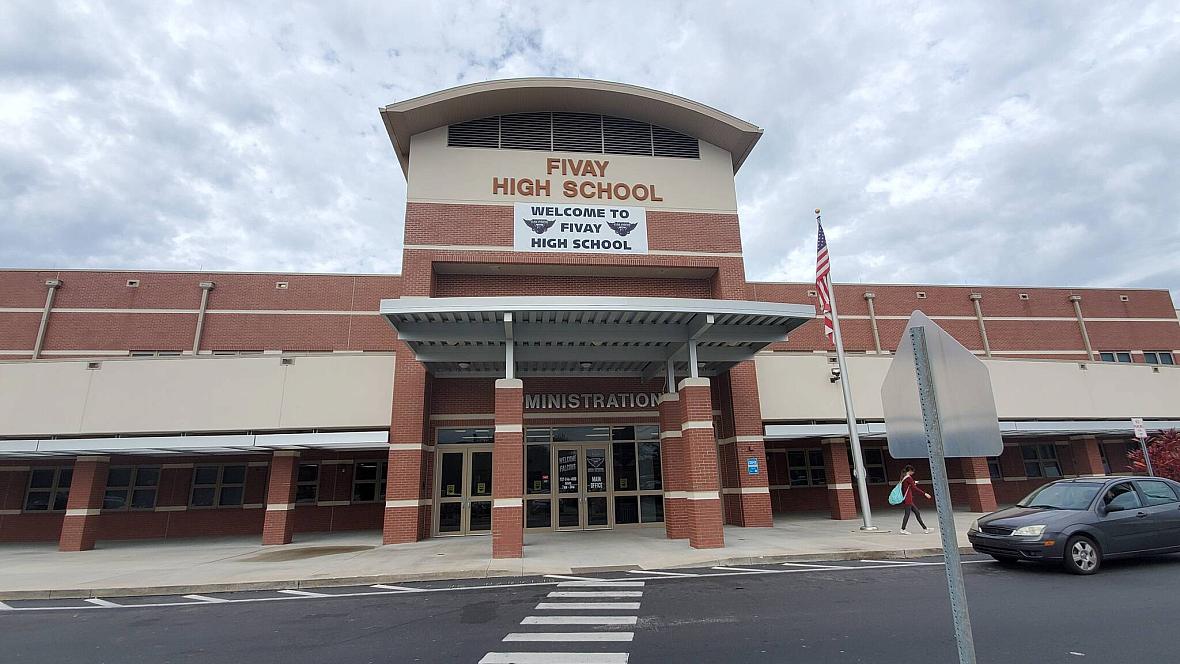
Fivay High School is one of many Pasco County middle and high schools where Pasco Sheriff’s Office deputies serve as school resource officers.
JEFFREY S. SOLOCHEK | Times
The Pasco Sheriff’s Office keeps a secret list of kids it thinks could “fall into a life of crime” based on factors like whether they’ve been abused or gotten a D or an F in school, according to the agency's internal intelligence manual.
The Sheriff’s Office assembles the list by combining the rosters for most middle and high schools in the county with records so sensitive, they’re protected by state and federal law.
School district data shows which children are struggling academically, miss too many classes or are sent to the office for discipline. Records from the state Department of Children and Families flag kids who have witnessed household violence or experienced it themselves.
According to the manual, any one of those factors makes a child more likely to become a criminal.
Four hundred and twenty kids are on the list, the Sheriff’s Office said.
The process largely plays out in secret. The Sheriff’s Office doesn’t tell the kids or their parents about the designation. In an interview, schools superintendent Kurt Browning said he was unaware the Sheriff’s Office was using school data to identify kids who might become criminals. So were the principals of two high schools.
The Department of Children and Families didn’t answer when asked if it knew its data was being fed into such a system.
Pasco County Sheriff Chris Nocco [Times file photo]![Pasco County Sheriff Chris Nocco [Times file photo] Pasco County Sheriff Chris Nocco [Times file photo]](/sites/default/files/styles/inline_image/public/u106571/neil.jpg?itok=64CXnkVm)
Sheriff Chris Nocco declined requests to be interviewed, and his agency did not make anyone from its intelligence-led policing or school resource divisions available for comment.
In a series of written statements, the Sheriff’s Office said the list is used only to help the deputies assigned to middle and high schools offer “mentorship” and “resources” to students.
Asked for specifics, it pointed to one program where school resource officers take children fishing and another where they give clothes to kids in need.
Ten experts in law enforcement and student privacy questioned the justification for combing through thousands of students’ education and child-welfare records.
They called the program highly unusual. Many said it was a clear misuse of children’s confidential information that stretched the limits of the law.
“Can you imagine having your kid in that county and they might be on a list that says they may become a criminal?” said Linnette Attai, a consultant who helps companies and schools comply with student privacy laws.
“And you have no way of finding out if they are on that list?”
The Sheriff’s Office said its data sharing practices with the school district date back 20 years and are crucial to keeping campuses safe.
It added that only a juvenile intelligence analyst and the school resource officers have access to the list and the underlying data.
The agency also objected to the characterization of the list as potential future criminals, saying it was also designed to identify students at risk for victimization, truancy, self-harm and substance abuse.
But the intelligence manual — an 82-page document that school resource officers and other deputies are required to read — doesn’t mention those other risks. Instead, in five separate places, it describes efforts to pinpoint kids who are likely to become criminals.
The office could not provide any documents instructing school resource officers to interpret the list another way.
EXCERPTS: How the manual defines at-risk youth
The following are some of the passages from the Pasco Sheriff’s Office’s intelligence-led policing manual that describe at-risk students as potential criminals and offenders.
Page 13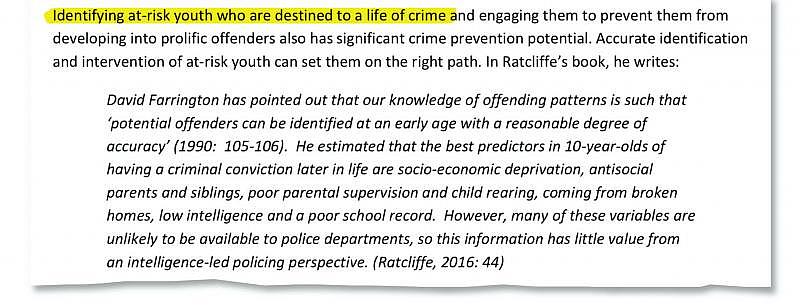


The list of school kids isn’t the agency’s only effort to identify and target people it considers likely to commit crimes. In September, a Tampa Bay Times investigation revealed that the department’s intelligence arm also uses people’s criminal histories and social networks to predict if they will break the law.
The Sheriff’s Office pursues those people even when there’s no evidence of a new crime. Former deputies told the Times they were ordered to harass people on the target list by visiting their homes repeatedly and looking for reasons to write tickets and make arrests. One in 10 of the people targeted have been teenagers.
The ways the agency has extended its intelligence effort into mining education and child-welfare records have not previously been reported.
Because the children themselves don’t know if they’ve been flagged, it is difficult to say how it affects interactions between students and school resources officers or other deputies. The Sheriff’s Office declined to release a copy of its list of students to the Times.

When a reporter described the effort to Browning, he said he did not find it concerning.
“We have an agreement with the Sheriff’s Office,” the superintendent said. “The agreement requires them to use (the data) for official law enforcement purposes. I have to assume that’s exactly what they are using it for.”
Later, in a written statement, he added: “If there is any need to revisit any aspect of our relationship, we will do so in a thoughtful manner with the goal of keeping our students and staff safe.”
Two members of the Pasco School Board, Megan Harding and Alison Crumbley, described the district’s relationship with the Sheriff’s Office as strong and referenced safeguards to protect students’ privacy. The agreement between the two institutions says the Sheriff’s Office must keep the records confidential and use them in legal ways.
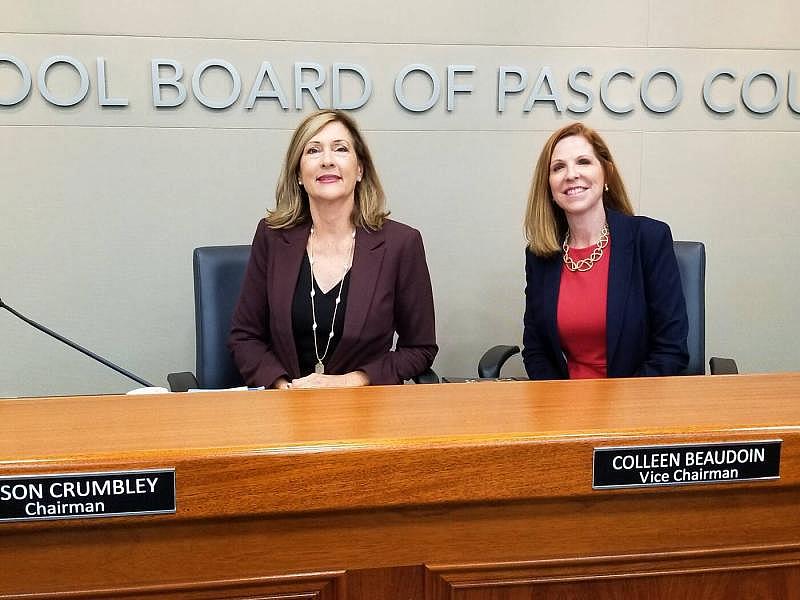
Experts said having school resource officers single out children could be harmful, especially if the kids were struggling at home or in school, or if they didn’t trust police.
They also said the effort was based on flawed science and likely biased against children of color and children with disabilities.Experts said having school resource officers single out children could be harmful, especially if the kids were struggling at home or in school, or if they didn’t trust police.School Board members did not return calls or declined to comment.
“It is a recipe for violating people’s rights and civil liberties,” said Harold Jordan, a senior policy advocate for the American Civil Liberties Union of Pennsylvania.
Elsewhere in the country, scandals have erupted when law enforcement agencies were found to have access to children’s private data, said Andrew Guthrie Ferguson, a law professor at American University and national expert in predictive policing.
Sensitive information about kids, Ferguson said, should remain “in the hands of people who can offer help.”
“Police are not in the business of offering help to juveniles,” he said. “They are in the business of policing.”
BAD GRADES AND CHILDHOOD TRAUMA
In its intelligence manual, the Pasco Sheriff’s Office says most police departments have no way of knowing if kids have “low intelligence” or come from “broken homes” — factors that can predict whether they’ll break the law.
“Fortunately,” it continues, “these records are available to us.”
The manual says the Sheriff’s Office has access to the information through partnerships with the Pasco school district and the state Department of Children and Families.
The district pays the sheriff $2.3 million annually to place 32 deputies in middle and high schools. It also provides access to its Early Warning System, which tracks all students’ grades, attendance and behavior.
Separately, the Department of Children and Families allows law enforcement agencies across Florida to use to its child welfare database so they can investigate child abuse and find missing children. The database, known as the Florida Safe Families Network, contains detailed case notes and kids’ abuse histories.
The Sheriff’s Office has its own records, too, which indicate if children have been the subject of custody disputes, have run away from home, have violated the county’s curfew for young people or have been caught with drugs or alcohol. The office also keeps track of who is friends with whom.
It feeds information from all three datasets into a system that scores kids in 16 different categories. In each, children are assigned one of four labels: on track, at risk, off track or critical.
It doesn’t take much to be designated “at risk.”
Getting a D on your report card is enough, the manual says. So is missing school three or more times in a quarter.
Kids are also labeled “at risk” if they’ve experienced a childhood trauma. That includes witnessing household violence, being the victim of abuse or neglect, or having a parent go to prison.
Internal emails show the list was last updated in October for the new school year.
GRAPHIC: FACTORS THAT CAN PUT YOUR CHILD ON THE AT‑RISK LIST
The Pasco Sheriff’s Office uses data from the school district and the state Department of Children and Families, as well as its own records, to identify children it considers at risk of becoming criminals.
The Sheriff’s Office analyzes the data for more than 30,000 students in most of the middle and high schools in the county. (Pasco Middle School, Pasco High School, Gulf Middle School, Gulf High School and Harry Schwettman Education Center have school resource officers from other law enforcement agencies, so their students’ data is not included.)
The system flags kids who meet the “at-risk” criteria in 16 different categories.
Children who are deemed “on track” in all categories are removed from the list before it is distributed. The final version removes the underlying student data by using shaded labels to represent the child’s risk level in each category. The color codes are: on-track (green), at-risk (yellow), off-track (pink) or critical (red). Access the graphic here.
- - -
The agency said it only looks at data in schools where it provides school resource officers — the vast majority of the district’s middle and high schools. In total, those schools have more than 30,000 students.
Elementary schools have armed security guards and are not included, the agency said.
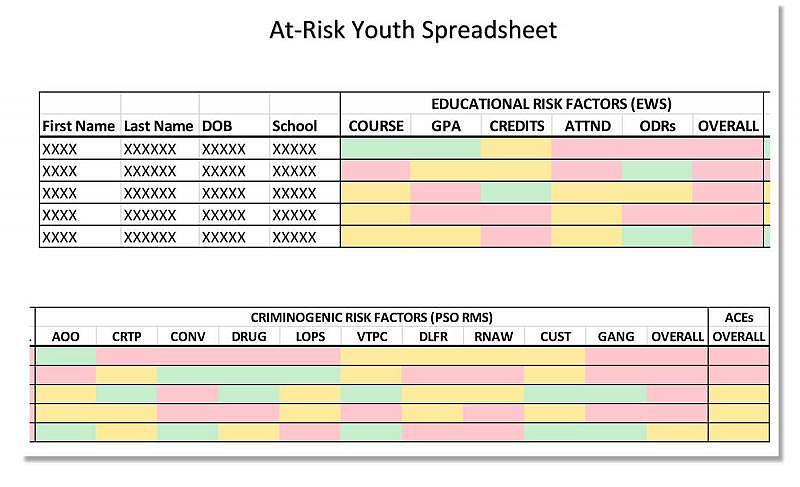
The Sheriff’s Office has been identifying and monitoring at-risk children as part of its intelligence operation since at least 2011, when Nocco first became sheriff.
That summer, school resource officers made hundreds of home visits to at-risk kids, according to news reports. They offered support to the children and their families, they told reporters at the time. But they also questioned them about local crimes and arrested kids who violated probation or curfew orders.
In one of its statements to the Times, the Sheriff’s Office said it looks for alternatives to arrest “when possible” and that supporting struggling kids is an important part of any school resource officer’s job.
Internal documents, however, show that those officers do more than mentor.
The intelligence manual encourages them to work their relationships with students to find “the seeds of criminal activity” and to collect information that can help with investigations.
“Often SROs will hear about past, present or future crimes well before others in the law enforcement community,” the manual says.
One school resource officer’s annual performance review, obtained by the Times through a public records request, noted he contributed to intelligence briefings. It also praised him for filing nearly two dozen “field interview reports” based on interactions with at-risk kids.
A ‘CIRCULAR EFFECT’
Law enforcement and privacy experts found many aspects of the Sheriff’s Office’s formula for identifying kids alarming.
Some metrics, they said, were completely outside of kids’ control. Others were likely biased.
Take school discipline.
In Pasco County, Black students and students with disabilities are twice as likely to be suspended or referred to law enforcement, according to federal data.
Bacardi Jackson, a senior supervising attorney for children’s rights for the Southern Poverty Law Center, said designating those kids as potential criminals could have a “circular effect.” They would likely receive even more attention from school resource officers and as a result, face additional discipline.
Leah Plunkett, an expert in digital privacy law and lecturer at Harvard Law School, said the program also appeared to be discriminatory.
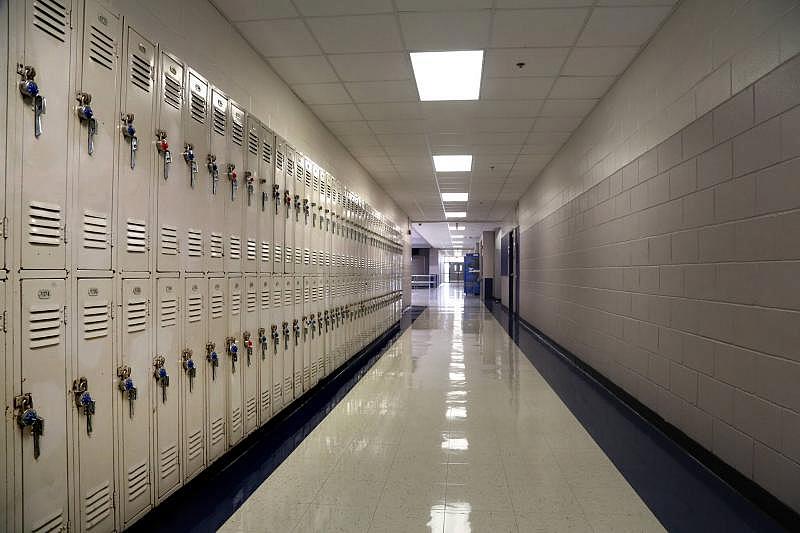
Singling out kids based on whether they had been involved in custody disputes, for example, could be considered differential treatment based on family status, she said.
The Sheriff’s Office says its program is based on research. It points to a 2015 study that found young people who had experienced multiple childhood traumas were at a higher risk of becoming serious, violent criminals than those who hadn’t.
But David Kennedy, a renowned criminologist and professor at the John Jay College of Criminal Justice whose research is referenced in Pasco’s manual, said the associations between childhood trauma and criminal behavior are “extremely weak.” He said using them to make predictions about individuals “flies in the face of the science.”
The methodology used by the Sheriff’s Office, he added, was likely to generate a large pool of children, the vast majority of whom would never get in serious trouble.
“There’s nothing — absolutely nothing — that can be fed into even the most sophisticated algorithm or risk-assessment tool based on information available when someone is a child that can say this person is going to be a criminal later on, much less a serious prolific criminal,” he said.
LEGAL CONCERNS
After the Times started asking questions about the use of data to target young people, the Sheriff’s Office seems to have started revamping elements of its program.
Emails show the agency has been drafting a policy for how school resource officers should interact with at-risk students that focuses more on offering support and building positive relationships.
Even with those changes, experts questioned whether using student data this way was legal.
Under federal law, education records can only be released to outside parties in certain circumstances.
Law enforcement agencies can use the information to help thwart school shootings and offer support to students who are in the juvenile justice system. But in cases like those, experts said, they can only look at records relating to a specific student or situation.
“You can’t just give every student’s record out,” said LeRoy Rooker, who led the federal Department of Education’s oversight of student privacy for more than two decades.
The law does say school resource officers can access education records because they can be considered “school officials.” But under most circumstances, they can’t share the records with the rest of the department, said Amelia Vance, a member of the Maryland Department of Education’s Student Data Privacy Council who works for the nonprofit Future of Privacy Forum.
And they can’t use them in a law enforcement investigation without permission from a parent, unless there is a court order or a health and safety emergency, Vance said.
In its statement, the Sheriff’s Office said it had access to the data “lawfully” and noted that school resource officers receive annual training on the federal student privacy law.
The school district has recently been criticized for lax privacy practices. Last year, a state audit found that too many district employees had access to current and former students’ sensitive data, including social security numbers. The district later revoked privileges for 570 employees.
Attai, the student privacy consultant, said the school district should take action in this case, too, and reconsider its arrangement with the Sheriff’s Office.
“This is a district that is sending millions of dollars to the sheriff of Pasco County to target its students as criminals,” she said.
The Times reported this story with the support of the Fund for Journalism on Child Well-Being, a program of the USC Annenberg Center for Health Journalism’s 2020 National Fellowship. The reporting was also supported by a grant from the Fund for Investigative Journalism.
[This story was originally published by Tampa Bay Times.]


